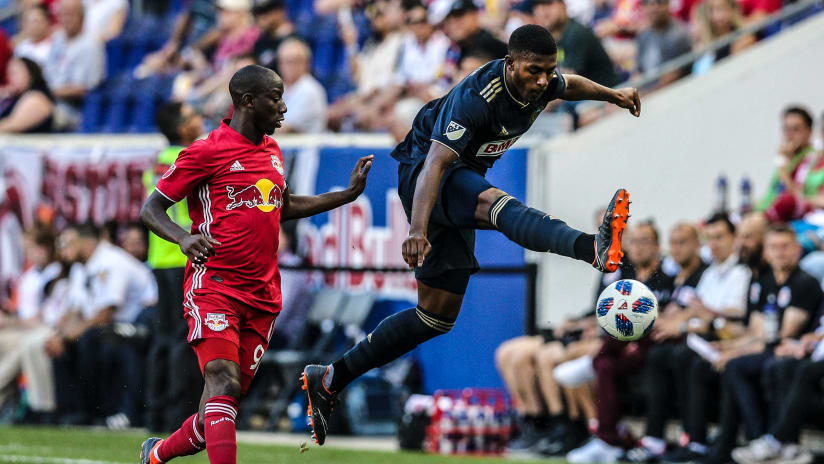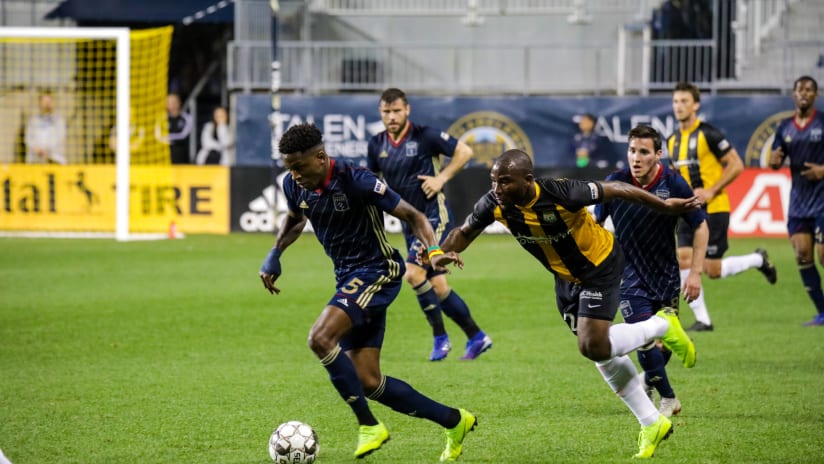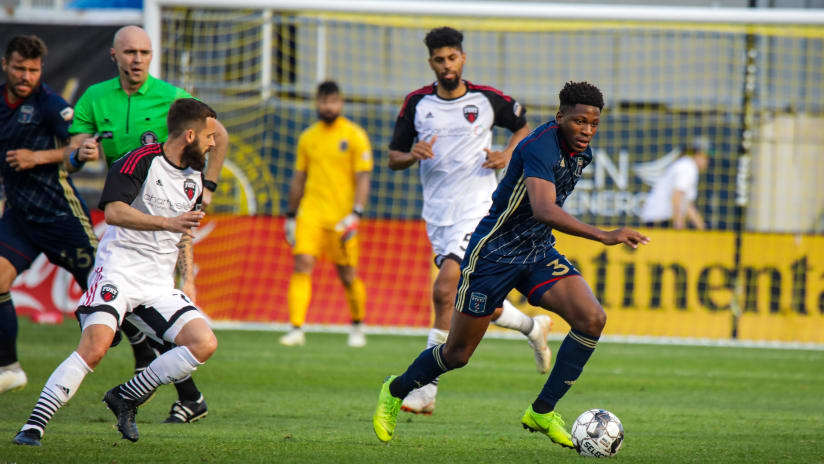Part 1 of the tactical analysis looked at how New York uses pressure and punting to win the ball back near the opponent’s goal. Part 2 will quickly examine how the Union can respond and list some keys to look for while watching the match.
Gimme some space
Red Bulls can only be effective if they can turn the expanse of the soccer pitch into a teeny-weeny area from which no ball can escape with any purpose. Pressure is meant to force the ball carrier to play a pass to the first open man they see, or to hold the ball and fall prey to a second defender. As a result, the pressing team can abandon the far side of the field if they are effectively closing down the ball and following up with coordinated, tight marking of the nearest players to the ball.
The nice thing for New York's opponents is that the response to their system is obvious: Get the ball into the open space! But effectively doing that is, as Red Bulls' record shows, quite difficult. For the Union, playing passes quickly out of pressure after retrieving loose balls will be essential. Changing the focal point of possession forces New York to reorganize, and often creates a moment in which a ball to the far side of the pitch will create a 1v1 or at least provide the receiver enough time to pick out an option in space.
The Union have speed on the flanks, so if they can provide Haris Medunjanin and Borek Dockal with time, they exploit spaces behind New York's high defensive line and rely on Ale Bedoya's industry to provide an extra man forward for attacks.
Remember -- Medunjanin is likely to be suspended for additional MLS matches after his outburst in Atlanta, but he will be available for selection in the US Open Cup. The Bosnian's nose for space in buildup play can disrupt New York by forcing extra players forward and leaving gaps in midfield. In such instances, the Union's young center backs will need to be calm and play accurate passes into Dockal so he can turn and find early runners in behind.
What to look for
So let's summarize:
Even on the road, Red Bulls will be aggressively pressing the Union's defense. This does not mean they'll chase the ball all over the place, but instead will be hyper-vigilant for triggers like those listed in Part 1, so watch for those triggers during the game. When they see one, the closest man to the ball will explode forward and you'll see the rest of the team go into a zonal pressing structure that sees them get close to a short passing option.
New York will punt, but don't think of this as a win. Look at this chart of Red Bulls' recoveries against Seattle on Wednesday. That's just Red Bulls gaining possession of the ball over and over and over again deep in Sounders' territory. Also of note -- this is only through 52 minutes of play, at which point Wright-Phillips doubled New York's lead.
As they did in Harrison, NJ earlier this season, the Union will aim to make a quick first pass after recovering Red Bulls' long punts, or they will try to win the ball in the air and put it into a different area of the pitch. Additionally, Philly will try to exploit their speed advantage by attacking the space behind Red Bulls' high line
One final note -- if the match ends a draw, the Union will be ready. They have been practicing penalty kicks in case this fixture, as it has in two of the past three Open Cups, goes the distance without a winner (in both 2015 and 2017, Philly and NYRB went to penalties, with the Union winning in 2015 through Fernando Aristeguieta's finish and losing last year when Fafa Picault's shot was saved).
Earlier this season, the Union could have easily walked out of Red Bull Arena with three points, but they failed to finish their chances. It's been a common theme for Philly all season, and it's one they will need to overcome to move on in the Open Cup.













